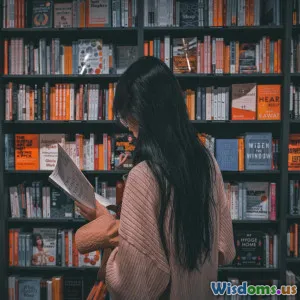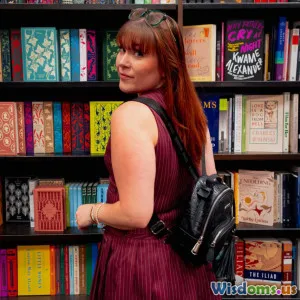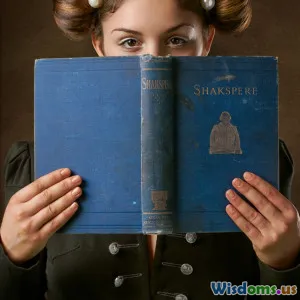
The Rise of Diverse Voices Redefining Modern Literary Canon
8 min read Exploring how diverse voices are reshaping the modern literary canon with fresh perspectives and cultural richness. (0 Reviews)
The Rise of Diverse Voices Redefining Modern Literary Canon
Introduction
The literary canon — a body of works traditionally recognized as the most important and influential in shaping literature — has long been dominated by a relatively narrow selection of voices, often shaped by colonial histories, patriarchal perspectives, and Eurocentric standards. However, in recent decades, there has been a remarkable rise of diverse voices transforming this landscape. Writers from varied backgrounds, including people of color, women, Indigenous authors, and LGBTQ+ storytellers, are challenging the old paradigms and broadening our understanding of human experience. This article explores how this radical diversification is rewriting the rules, reshaping the canon, and opening new pathways for readers and writers alike.
Historical Context: The Traditional Literary Canon
For centuries, the literary canon was dominated by Western, male authors such as William Shakespeare, Jane Austen, and James Joyce. While these figures undeniably shaped literary history, the canon often excluded voices that did not align with dominant cultural and social norms. According to literary scholar Terry Eagleton, the canon reflected “cultural authority” and “ideological power,” preserving existing hierarchies.
The exclusion was not accidental; systematic barriers limited publishing opportunities and educational access for marginalized groups. Moreover, schools and universities favored canonical texts, reinforcing narrow understandings of literary excellence.
The Need for Change: Why Broaden the Canon?
As societies became more aware of systemic inequalities and histories of exclusion, questions arose about who decides what counts as ‘literature’ and whose stories matter. Marginalized communities and scholars argued that the canon's limitations skew readers’ perceptions of human experiences.
Broadening the canon offers multiple benefits:
- Cultural Representation and Validation: Literary inclusion affirms the identities and histories of diverse communities.
- Empathy and Understanding: Exposure to diverse narratives fosters cross-cultural empathy.
- Innovation in Literary Forms: New voices often challenge and expand traditional genres and storytelling structures.
The Emergence of Diverse Voices: Key Movements and Authors
Several social movements contributed to diversifying literature:
1. Civil Rights and Black Literary Renaissance
The Harlem Renaissance in the 1920s already began amplifying African American voices, but post-Civil Rights movements accelerated inclusion. Authors like Toni Morrison, whose novel Beloved won the Pulitzer Prize and later the Nobel Prize, brought Black American stories and oral traditions to global audiences.
2. Feminist and Women's Writing Movements
The feminist wave of the 1960s and ’70s pushed for recognition of women’s literary contributions. Writers such as Margaret Atwood and Alice Walker explored gender, identity, and power dynamics, expanding thematic horizons.
3. Postcolonial and Indigenous Literature
Postcolonial authors such as Chinua Achebe (Things Fall Apart), Salman Rushdie (Midnight’s Children), and Chimamanda Ngozi Adichie (Half of a Yellow Sun) brought non-Western experiences into Western-dominated discourse. Indigenous writers like Louise Erdrich weave histories and mythologies previously overlooked.
4. LGBTQ+ Voices
Writers like James Baldwin, Audre Lorde, and more recently Ocean Vuong and Carmen Maria Machado, foreground queer identities and challenge heteronormative narratives.
How Institutions Are Responding
Academic Curricula
Universities and schools are gradually revising syllabi to include diverse texts. For example, the Modern Language Association reported in a 2020 survey that over 40% of university literature programs include multicultural or ethnic studies courses.
Publishing Industry Initiatives
Publishers are actively seeking underrepresented voices. Programs such as Penguin Random House’s 'Emblem Editions' focus on Black literature, while organizations like We Need Diverse Books advocate inclusivity in children’s literature.
Literary Awards and Recognition
The recognition of diverse writers by prestigious awards signals change. In 2019, Bernardine Evaristo became the first Black woman to win the Booker Prize (shared with Margaret Atwood), indicative of shifting acknowledgment.
Real-world Impact: Changing Reader Experiences
The rise of diverse voices profoundly affects readers:
-
Expanding Worldviews: Readers gain insight into cultures and lives that differ from their own. For instance, reading Arundhati Roy’s The God of Small Things offers a nuanced view of Indian society.
-
Identity Affirmation: Marginalized readers find representation, improving self-understanding and validation.
-
Dialogue and Social Awareness: Stories challenging racism, sexism, and other issues invite broader societal conversations.
Challenges and Critiques
While progress is significant, challenges remain:
- Tokenism: Inclusion risks superficial representation without systemic change.
- Gatekeeping: Established institutions sometimes resist true diversification.
- Commercial Pressures: Market demands can limit experimental voices.
Scholars stress the need for ongoing efforts beyond symbolic gestures toward authentic inclusion.
The Future of Literary Canon
The literary canon is no longer a fixed set of works but a dynamic conversation. Digital platforms, self-publishing, and global connectivity have empowered voices previously unheard. As author Chimamanda Ngozi Adichie emphasizes, “The problem with stereotypes is not that they are untrue, but that they are incomplete.” The inclusive canon seeks completeness.
Conclusion
The rise of diverse voices is one of the most transformative developments in modern literature. By integrating stories from different races, genders, cultures, and identities, the literary canon is better reflecting the complexity of the human experience. This evolution enriches literature academically and culturally, inspiring readers and society at large to engage with a fuller, more inclusive array of narratives. For educators, readers, and writers alike, embracing this diversity is a vital, exciting journey toward a more equitable literary future.
References
- Eagleton, Terry. Literary Theory: An Introduction. University of Minnesota Press, 1983.
- Modern Language Association. “Survey on Diversity in English Programs,” 2020.
- Penguin Random House. “Emblem Editions” initiative website.
- Booker Prize announcements and archives.
- Interviews and speeches by Chimamanda Ngozi Adichie.
Author’s Note: This article intends not only to inform but also to inspire readers to actively seek and support diverse literature, encouraging a literary culture that values every voice.
Rate the Post
User Reviews
Other posts in Cultural Studies
Popular Posts















